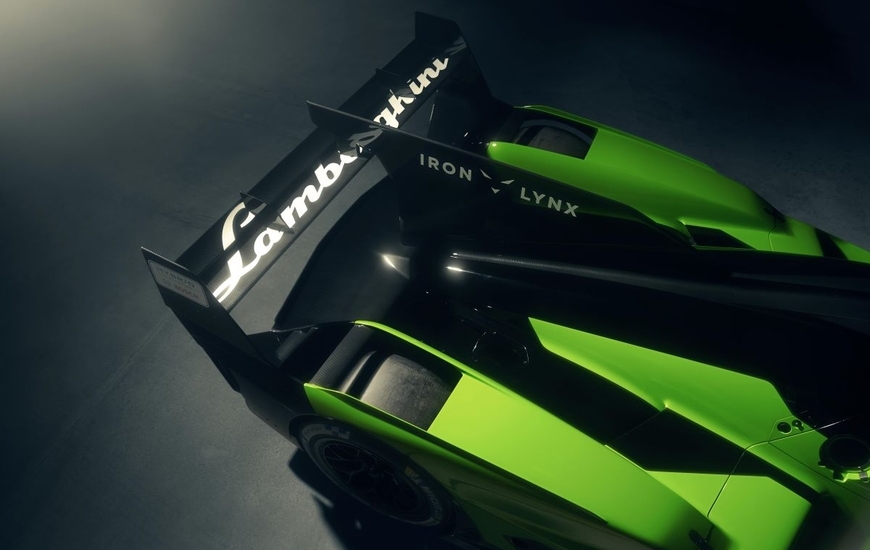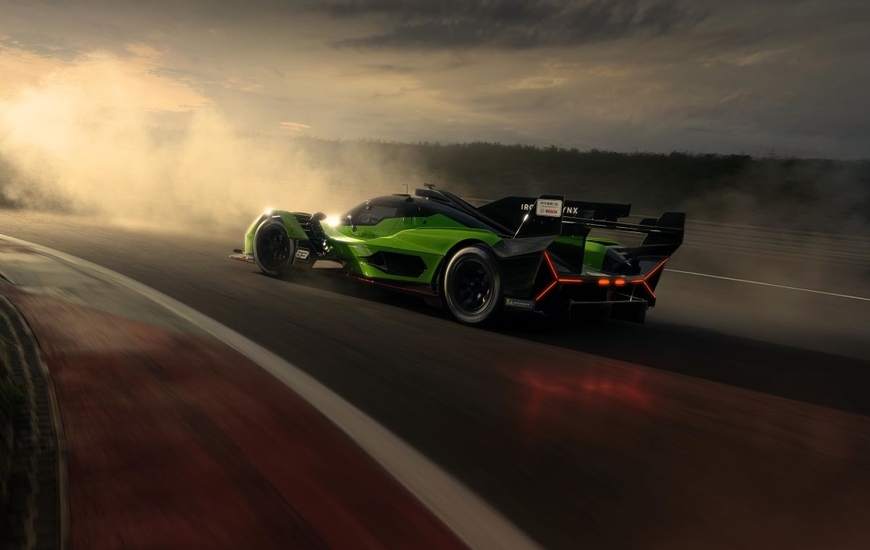Lamborghini Squadra Corse launched its first hybrid endurance racing prototype, the SC63, at Goodwood Festival of Speed. The SC63, which will begin testing within weeks, is set to compete in the Hypercar class of the 2024 FIA World Endurance Championship, including the 24 Hours of Le Mans, and in the GTP class of the IMSA WeatherTech Sports Car Championship Endurance Cup, comprising classic races such as the 24 Hours of Daytona and 12 Hours of Sebring. Lamborghini has partnered with Italian team Iron Lynx to run the car in international competition and has signed world-class drivers from the world of Formula 1 and endurance racing.
The LMDh project represents a new concept of racing and fits the Direzione Cor Tauri strategy presented in 2021: a roadmap for electrification leading the company to hybridize the entire model range by the end of 2024 enhancing driving emotions and performances at the same time. Thanks to the SC63 this approach has been applied also to the motorsport programme representing a new pillar of the Lamborghini Manifesto: Driving Humans Beyond.
“The SC63 is the most advanced racing car ever produced by Lamborghini and it follows our roadmap ‘Direzione Cor Tauri’ laid out by the brand for the electrification of our product range,” says Stephan Winkelmann, Lamborghini Chairman and CEO. “The opportunity to compete in some of the biggest endurance races in the world with a hybrid prototype fits with our vision for the future of high-performance mobility, as demonstrated for road legal cars with the launch of the Revuelto. The SC63 LMDh is the step into the highest echelons and into the future of motorsports for our Squadra Corse.”
The SC63 features an all-new 3.8-liter twin turbo V8 engine that has been developed by Lamborghini engineers specifically for the racing program. The engine is a ‘cold V’ configuration, meaning that the turbos are mounted outside the vee angle of the engine which makes them easier to cool and to service. Furthermore, the ‘cold V’ solution lowers the mass and optimizes the car’s centre of gravity. This solution, combined with a specifically developed aero balance and attitude, has been identified as the most effective to achieve the best tyre grip, and perfect balance, drivability and consistent speed both over a single lap but also across long distance races.
Power from the engine and the hybrid system, which is standard across the LMDh-category cars, is limited by regulation to 500kW (680 CV). The Power Unit is managed by a Bosch electronic control unit. The LMDh rule set specifies a standard gearbox, battery and motor generator unit (MGU), which helps to contain the development costs for the prototype.
Under the skin, Lamborghini engineers have been able to exert their influence over all aspects of the car. Although the gearbox is standard across all LMDh cars, there is still freedom to customise it to a brand’s requirements including the selection of the gear ratios and the slip of the mechanical differential.
“Motorsport is, to us, also a valuable and demanding proving ground for our technology,” states Rouven Mohr, Lamborghini Chief Technical Officer “Our LMDh car, the Lamborghini SC63, is an exciting challenge from both a technical and a human standpoint. The development of our internal combustion engine, aerodynamically efficient bodywork and the overall technical package is a process that has pushed us to constantly raise our own standards. Now, it is time to put the wheels in motion, literally, on track in order to be ready and competitive for the 2024 season. As we develop our LMDh car, we are also mindful of the technology transfer opportunities. We will take our learning experiences from motorsport and apply them where possible to our future production cars.”
Lamborghini has selected renowned experts Ligier as its partner to develop and build the monocoque. As the first manufacturer to select Ligier on an LMDh project, there was freedom for Lamborghini to specify its requirements, including the development of the push rod front suspension design, overall weight distribution and ease of service for critical parts of the car. The bellhousing, which fills the gap between the rear of the engine and the front of the gearbox, positively affects torsional stiffness, and has been designed to house the electric engine.
-

-
18 July 2023


























